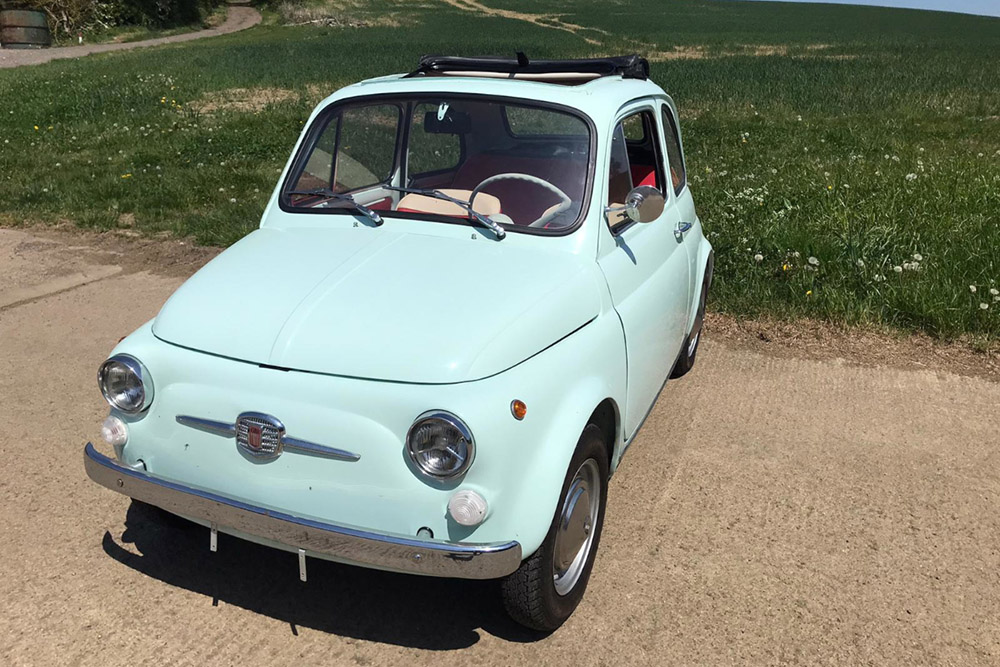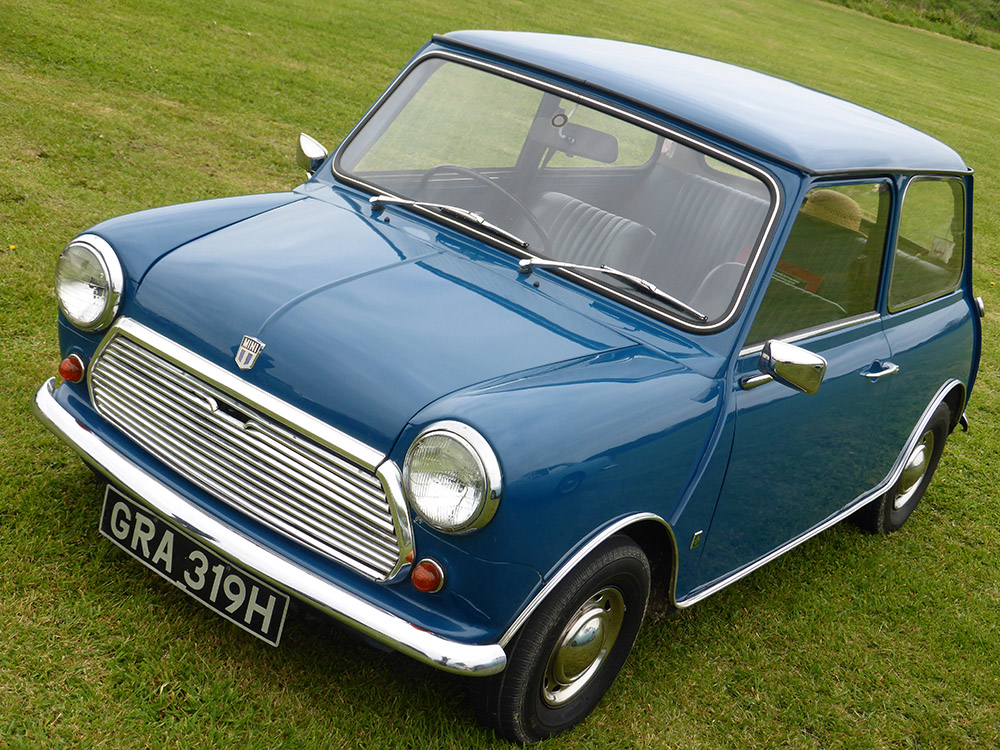Buying a 1970s classic car for under £10k
Following our roundup of the Top 10 classic cars from the 1960s and 1980s, Footman James looks back on motoring from the decade of disco music, flared trousers and long hairstyles. The Seventies provided another decade of interesting motors, but with that came the decline of the British motor industry, and the 1973 oil crisis. Mostly British models feature in this list, because the 1970s was the last decade in which our once huge homegrown industry still dominated new car sales. Here are 10 to consider:
Rover P6

Credit: Heritage Motor Centre, Gaydon
The Rover P6 ran from 1963 until 1977, badged either as a 2000, 2200 or 3500 to reflect its engine size. It still represents fantastic value for money today, with several good examples available for far less than our £10k budget. Classed as an early example of an executive car, the P6 was clever too, thanks to a de Dion tube suspension at the rear, four-wheel disc brakes, and a fully synchromesh gearbox. It also had a Citroen DS-inspired unibody design, which featured non-stressed panels bolted to a unit frame. The 3500 ‘V8’ is the powerplant to have, but it is thirsty.
Fiat 500

Credit: Classic Car Auctions
The only non-British car to feature on our list is also another long-lived production car, responsible for getting Italy motoring from 1957. From 1965-75, it was badged either as a 500F, 500L or 500R – identifiable by its front-hinged doors, replacing the earlier ‘suicide’ design. Its diminutive size becomes clear on the move, with fantastic grip and perfect city driving characteristics – fitting into small gaps on the road and parking spaces with ease. Budget £6-10,000 for anything from a decent runner to a tidy example.
Triumph Stag

Credit: Silverstone Classic
If none of the cars in this list scream ‘the Seventies’ loud enough, surely the burble of the V8 and bright Seventies colours of the Stag will – produced from 1970-77. It was different to Triumph sports cars that came before it, by offering a more premium and relaxing Grand Tourer experience. Several cars developed under British Leyland that decade were criticised for lacklustre styling, but the handsome Stag came from Triumph and was the work of Italian designer Giovanni Michelotti, who had been designing every model since the late 1950s. Any Stag priced between £8-10,000 is going to be a runner, in need of a bit of ‘fettling’.
MG MGB / MGB GT

Credit: The Market by Bonhams (2)
The phenomenal success of the MGB roadster and MGB GT coupé over a near two-decade production run, can be owed to its simple mechanicals, extensive parts supplies and support – making it one of the best and easiest classic ownership propositions. Powered by the 1798cc B-series four-pot, performance is adequate, rather than exhilarating. The sheer number of survivors have kept prices at reasonable levels since production ended in 1980. So many have required restoration since then, and values have been steadily increasing. Around £8,000 can be enough to have a good example of a ‘B’ in either open-top or Pininfarina-designed GT form in your garage.
Triumph Spitfire

Credit: Lothar Spurzem via WikiCommons
The 1962-80 Spitfire was another Anglo-Italian effort designed by Michelotti. Unlike the MGB, which had a unibody construction, the Spitfire featured the traditional body-on-frame design – which came with the added benefit of easy engine access. Despite the obvious handling shortcomings of being a vehicle of that construction type and having the mechanicals from the Triumph Herald, the Spitfire went on to win numerous National Sports Car Championships and even won the 1964 Geneva Rally. Both the Mark IV and Mark V Spitfires featured a rear end similar to the new Stag, a sophisticated interior and more power.
Jaguar XJ Series II / III

Credit: Jaguar UK
XJ Series I production continued until 1973, but only Series II and Series III examples appeared on sale within our budget. British Leyland relied on Jaguar sales in the USA, and restyled and developed the XJ to keep up with emissions and safety legislation. The Series II had a brand new bodyshell with side impact protection, a new bulkhead design to protect occupants and a shallower front grille to allow for raised front and rear bumpers. Available either as a Jaguar or a Daimler in both-four door and in short-lived XJC coupé form. Prices for four-door XJ Series IIs start from £8,000, which is a bargain when considering founder, Sir William Lyons, considered it his favourite Jaguar model.
Vauxhall Cavalier

Credit: Graham Robertson
The first generation of the Vauxhall Cavalier was developed to take on the mighty Ford Cortina, sold from 1975-81. Although owned by US giant General Motors (GM), and developed in Germany by Opel, the Mark I Cavalier was designed and built at Vauxhall’s hometown of Luton. Designer Wayne Cherry was even given the freedom to style his own ‘shovelnose’ front end to differentiate it from its German cousin, the Opel Ascona. Available in saloon, coupé and ‘sports-hatch’ body styles, some say the Cavalier transformed Vauxhall’s reputation, at a time when the brand was in real danger of becoming another British brand to fall into the abyss.
Austin / Morris Mini Mark III / IV

Credit: Andrew Bone via Wikicomms
Owning an example of the iconic ‘classic’ Mini, produced from 1959-2000, is sure to put a smile on your face along with being a guaranteed investment. Here we’re focusing on the entry-level Mini Mark III and IV generations, which can occasionally still appear within our budget. 1970s Minis are identifiable by a lack of external door hinges and roll up front side windows. Just steer clear of cheaper restoration projects, which can quickly generate a substantial cost that can exceed their actual value. If a full restoration is necessary, many parts including new bodyshells are still available.
Austin 1100 / 1300

Credit: p&pphoto via Flickr
Think of the 1100/1300 like a bigger four-door Mini, which isn’t far from the truth. Production lasted until 1973 but still represents fantastic value for money today. Like the Mini, this model also has a reputation for corroding badly, but roadworthy examples that remain today are likely to be in fine fettle. Designed in partnership by Sir Alec Issigonis and Pininfarina, the 1100/1300 was sold under several marques, and in the 12 years it was produced it was nearly always Britain’s best-selling car. Buyers could choose between standard Austin or Morris models, luxurious Wolseley and Vanden Plas versions and sporty MG, Riley or GT branded options.
Reliant Scimitar

Credit: Steve Glover - Flickr
The earlier designed Scimitar GTE is regarded as more attractively styled and handles even better due to its lightness. Downsides include a glassfibre body that isn’t easy to repair, non-galvanised chassis on pre-1981 cars which could rust, Ford’s V6 engines which had a thirst for fuel and electrical gremlins. But find a good one within our budget, and this can be overlooked, as we have a 1970s sports car that covers all bases. It offers estate-like practicality, ease of maintenance, superb value for money, good performance, attractive styling and a rust-free bodyshell.
Which other ‘70s classic would you choose from our £10k budget? Maybe you already own one from our list already… Let us know in the comments below.
Cars of the Seventies. you missed one Rolls-Royce Silver Shadow roadworthy ones can be picked up from £3,000.
bango, 14/04/2023

MGB Roadster for me. A classic British sports car with timeless styling will never go out of fashion.
Borders wanderer, 14/04/2023
COMMENT